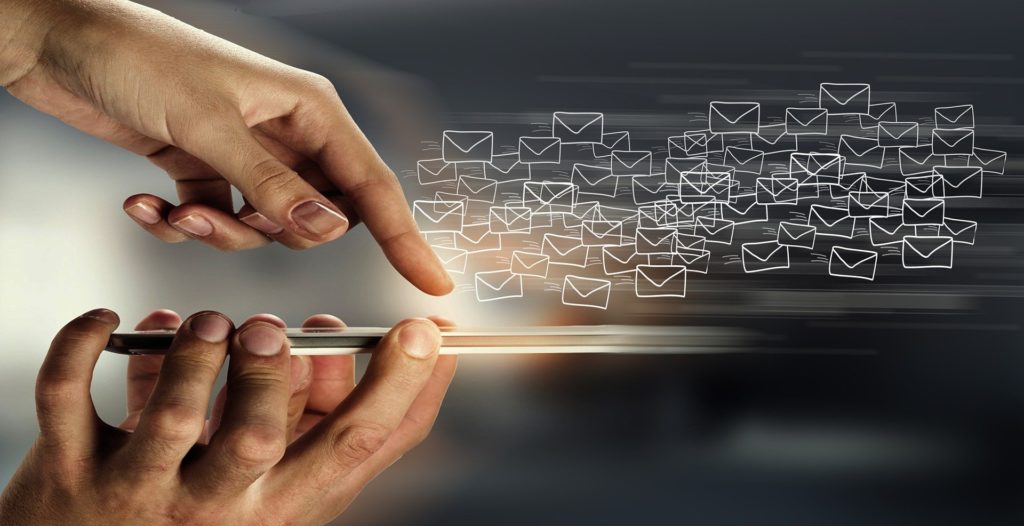Creating a Slightly Healthier Relationship with Your Email Inbox

For nearly two years now, much of the world has been adjusting to the new normal of remote work. Association professionals, like everyone else, are finding themselves glued to their laptops and devices more than ever, constantly receiving email and messages.
The relationship between professionals and their inboxes has gotten so toxic that 22% of remote workers want to leave their current job because of their email volume, according to a survey of 1,000 U.S.-based remote workers by Wakefield Research for the email platform Superhuman. According to the report, “nearly 2 in 3 remote workers would rather commute again if they could be unburdened from escalating emails and notifications.”
Fortunately, simple steps can help, such as reducing inbox clutter, taking advantage of shortcuts for repetitive tasks or even receiving emails in batches.
Utilize Preference Centers
One of the biggest keys to a better email relationship? An organized inbox, says Jessica Miller, a web developer who has been working in the email industry since 2008.
“Professionally, I get hundreds, if not thousands, of emails a day,” she says. To get a better handle on such an overflowing inbox, Miller recommends using an email client’s preference center to separate emails into specific folders or to get rid of them.
Front, a software company that combines emails, apps and teammates, compiled a list of some of the most popular approaches that people implement to better organize their inbox:
- Automation method. You have the option to automate the organization of your inbox, regardless of the email platform you use. Miller says that she’s a big fan of rules, which allow for users to move, flag and respond to messages automatically. This way you don’t have to constantly sort through tons of messages yourself. “Rules have helped me to target what I need to stay on top of and prioritize.”
- Time-based method. According to Front, “If you live and die by your to-do lists, this method is ideal for you. Create five new folders or custom labels for relevant emails, arranged by the time in which you need to deal with the messages they’ll contain. When a message comes in, assign it into the specific folder based on when you need to take action on it.” For instance, create folders with labels such as today, this week, this month, etc. The second you get a new email, place it into one of the folders.
- Messages-to-tasks method. Gmail, Outlook and other email platforms allow users to link a task list to their email address. Much like the time-based method, this practice will help prioritize urgent emails that need immediate attention. These task lists also make it easier to keep track of due dates and deadlines.
- Archive emails instead of trashing them. If you’re nervous about deleting unread messages or missing something important, you can choose to archive emails rather than permanently discarding them. Depending on the platform you use, you can adjust your email account settings to automatically archive messages by sender, category, subject, etc. If you use Outlook, you will have to create a rule to automatically archive the emails of your choice.
Be Mindful of Email Subscriptions
Miller says that many people, including herself, are getting more selective about what they sign up for and subscribe to. “I started unsubscribing a lot,” she says. “I used to sign up for anything and everything just to get a free coupon. But [now] I’m a little savvier with what I spend my money on,” in light of the pandemic and the rising cost of living.
Consider joining “the great unsubscribe” movement, as Miller calls it. You’ll find yourself receiving fewer junk emails after you take the time to remove yourself from any marketing mailing lists for brands whose emails you typically ignore or delete anyway. If you’ve been receiving an influx of messages from a brand that you do like but just want less of, try adjusting your engagement settings for the subscription. Sign up for promotional emails to hit your inbox once a month, rather than a few times each week.
Establish Email Boundaries and Stick to Them
Working from home has blurred the lines between personal life and work life. Establishing healthy boundaries will help you avoid unnecessary stress and potential burnout. It’s important to communicate the professional boundaries you set for yourself with coworkers, so that everyone is on the same page.
- Set availability hours. Let the members of your team know when you plan to be online and available for a quick email response. It may be useful to add the details of when someone can expect a response from you in your email signature. Specify how you would prefer to be contacted outside of your availability hours, if at all. Also, lead by example and stick to the hours you’ve set. Don’t be the person sending emails at midnight.
- Use your autoresponder. Generally, people make use of their out-of-office messages when they are on vacation or away from work. These messages can also be useful during the workday when you need to dedicate time to specific projects or tasks.
- Assign time for checking your inbox. Most people leave their email inbox open all day or check for new messages every few hours or even minutes. Instead, try limiting the number of times that you look at your inbox. Emails are not meant to be instant messages, so it’s perfectly fine if you don’t respond the very moment it arrives. Doing a check-in three times a day (once in the morning, once at lunch and once shortly before the end of the day) should suffice.
In a Harvard Business Review article about setting email boundaries, Sarah K. Peck wrote: “Email can be a tool we use to connect, to help other people, to communicate and even to think. But the deluge of modern email has come at the expense of leisure time and quality time, and too much of it erodes our ability to do high-quality work. Prioritizing ruthlessly can help us reduce the digital clutter. With that, your email inbox might get a bit simpler.”
Tags
Related Articles
How to Use ChatGPT in Association Work
ChatGPT can be another tool for work efficiency, but there are precautions to take as...
Learning to Learn: Improving Technology Literacy
Thanksgiving is here—when did that happen? As always, with fall comes thoughts of back-to-school and…
Avoid Getting Spooked by AI Hallucinations
New wrinkles continue to emerge regarding AI and its seemingly infinite applications.




